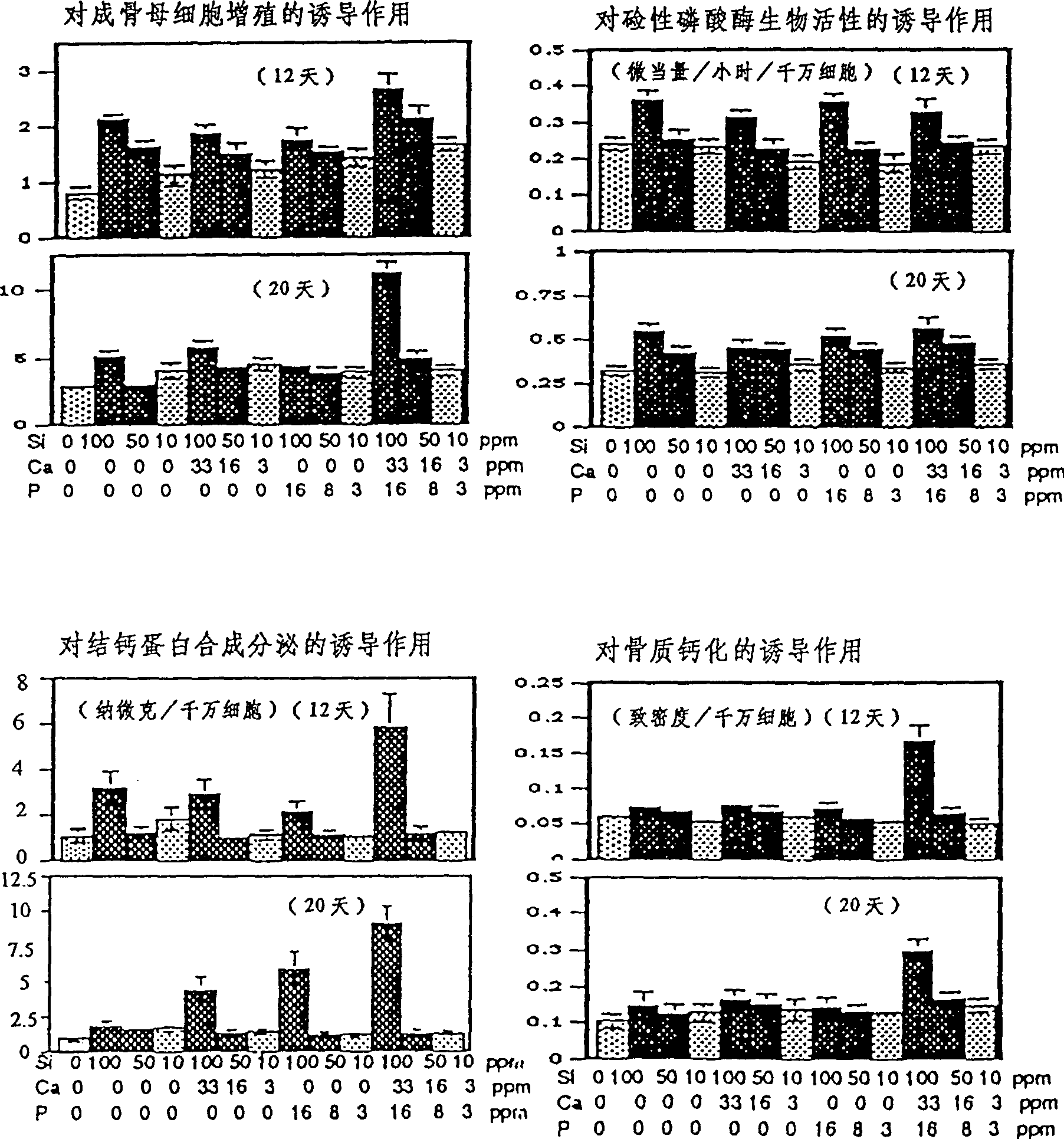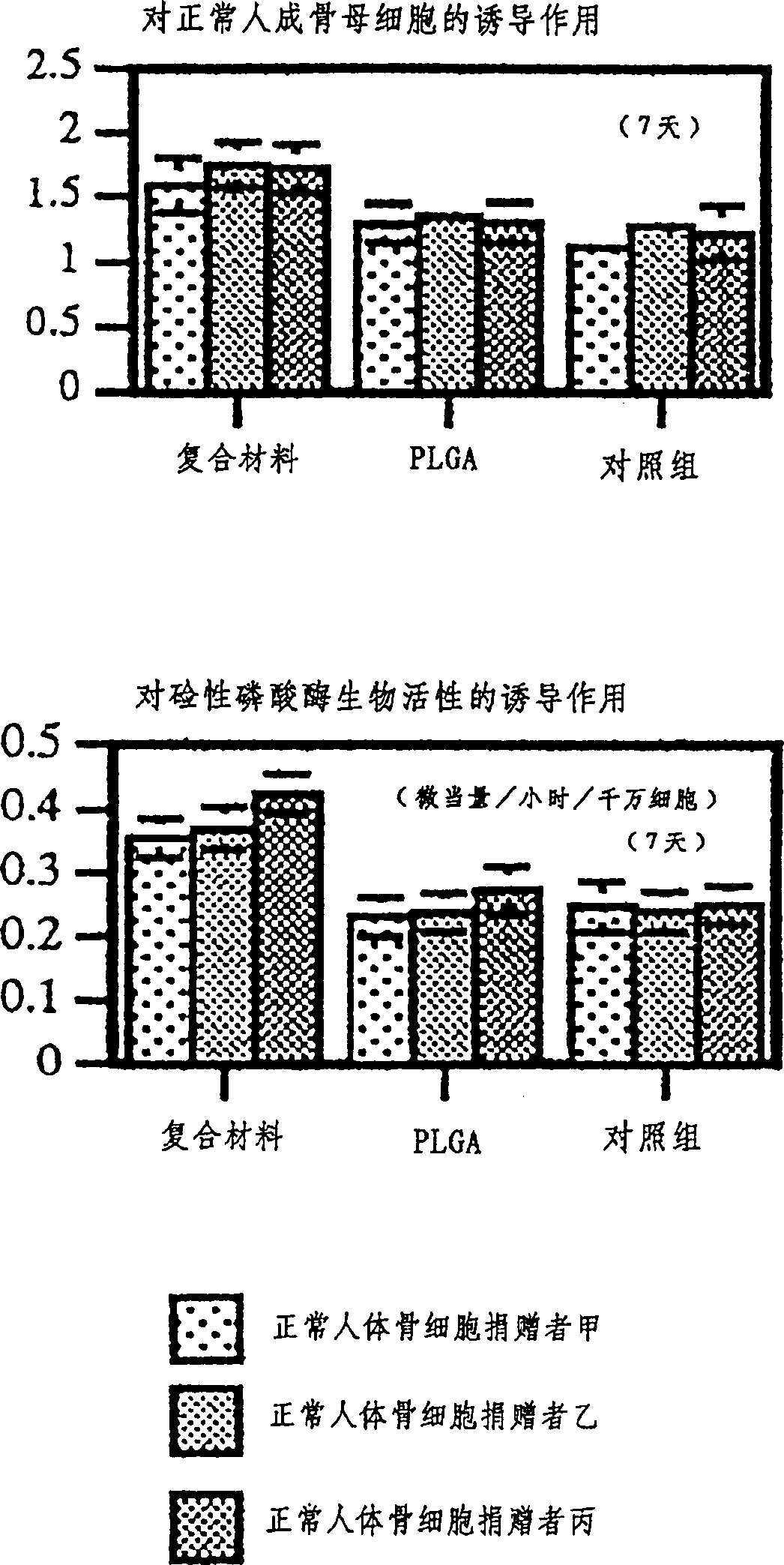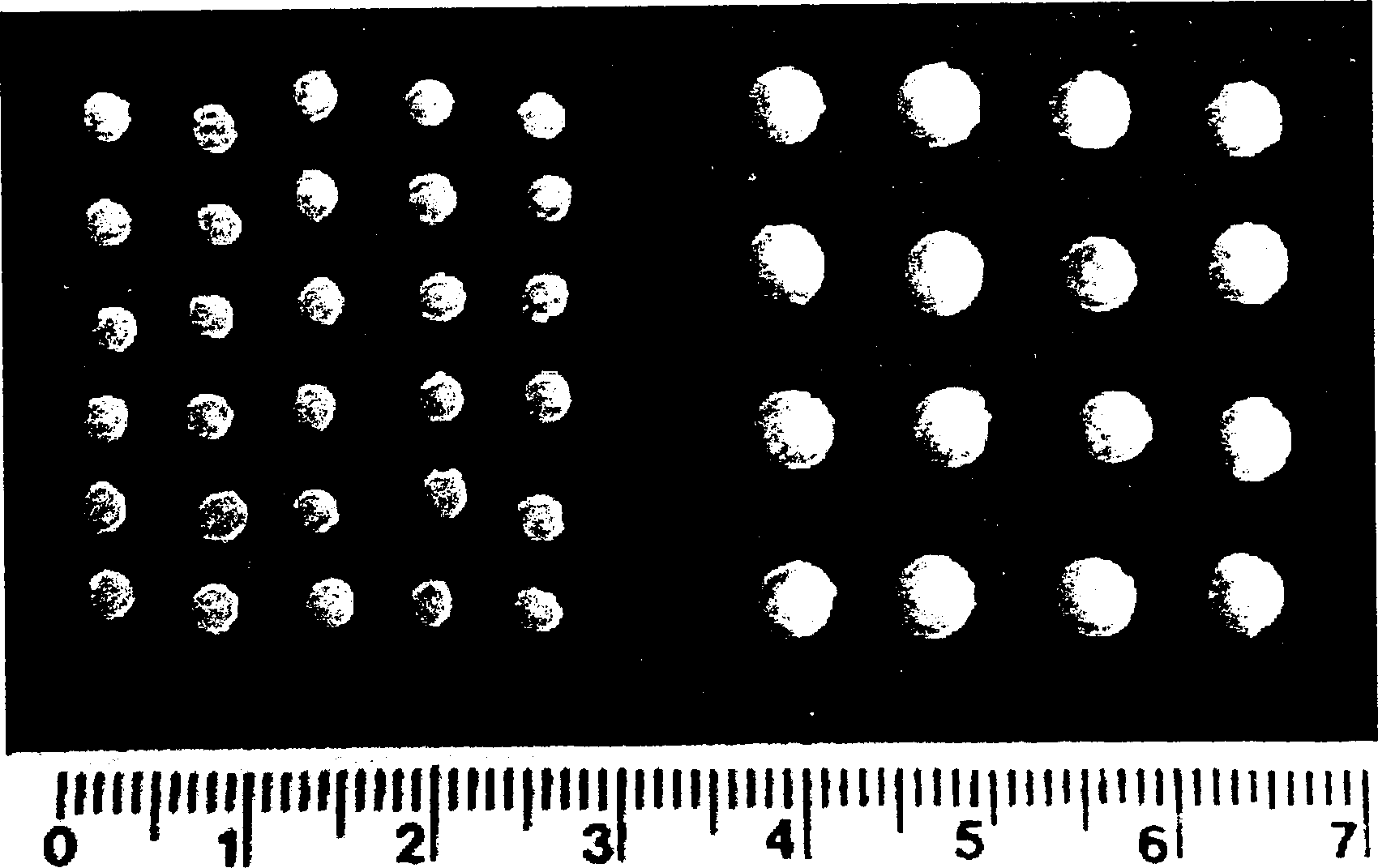Biotechnological body bone tissue rack and its making process and use
A technology of tissue biology and products, applied in the direction of biochemical equipment and methods, tissue regeneration, microorganisms, etc., can solve the problems of limiting the practical application of scaffold products, not taking into account the different conditions of bone regeneration and angiogenesis, and affecting bone tissue regeneration
- Summary
- Abstract
- Description
- Claims
- Application Information
AI Technical Summary
Problems solved by technology
Method used
Image
Examples
Embodiment 1
[0033] Example 1 Silicon, calcium, and phosphorus microparticles have obvious biological induction effects on the proliferation of normal human osteoblasts, the biological activity of alkaline phosphatase, the synthesis and secretion of osteocalcin, and bone calcification
[0034] The human osteoblasts tested were obtained from healthy donors aged 20-25, and each group of cells was obtained from 0.2 cubic centimeters of superficial bone debris from one donor. A total of 5 groups of cells were used for the test. attached figure 1 The results shown are the mean and standard deviation of 5 sets of test data. Each 0.2 cm3 of superficial bone chips from donors can expand in the laboratory to 6 million to 10 million osteogenic cells. The cell culture solution for this test is pre-added with silicon, calcium and phosphorus inorganic raw material particles with a diameter of less than 10 microns at specific chemical concentrations or chemical concentration ratios shown below each ta...
Embodiment 2
[0035] Example 2: Silicon, calcium, phosphorus microparticles and organic polymer (PLGA) composite material has the performance of inducing normal human osteoblast proliferation and alkaline phosphatase biological activity better than a single organic polymer PLGA
[0036] This example bioassay demonstrates the induction of a set of nanocomposites of the present invention in in vitro cell culture, compared to a single organic polymer, PLGA, and to conventional polystyrene-diene cell culture dishes. The chemical atomic weight combination of the inorganic elements of the composite material is 67% of silicon, 22% of calcium, and 11% of phosphorus, and the volume ratio of the combination of inorganic elements and PLGA is 50:50. The composite material and the single organic polymer PLGA were made into discs with a diameter of 2 cm and a thickness of 1.5 mm by mold hot casting (200 degrees Celsius, 8 hours) (see Example 4 for detailed preparation steps). The discs were placed in rou...
Embodiment 3
[0037] Example 3 Diffusion and distribution of silicon ions after implantation of silicon nanomaterials in animal models, and ion distribution in induced new bone tissue
[0038] This biological test uses adult white rabbits as the animal model. A bone cavity with a diameter of 0.5 cm was prepared in the fibula of the animal with a conical drill, and then filled with 50-80 nanometer silicon-calcium-phosphorous (atomic weight percentage 67:22:11) composite material particles, and the wound was sutured. When the experimental animals were fed to 2 and 8 weeks respectively, the material filling site and surrounding tissues were taken out by the second operation, fixed in 10% formalin, embedded in resin, cut 1 mm slices from the longitudinal direction, and then placed in a radioactive ion analyzer Measure the ion concentration facets on both sides of the interface between the material filling area and the surrounding animal body tissue. The data in Table 1 below are the mean value...
PUM
| Property | Measurement | Unit |
|---|---|---|
| diameter | aaaaa | aaaaa |
| diameter | aaaaa | aaaaa |
| diameter | aaaaa | aaaaa |
Abstract
Description
Claims
Application Information
 Login to view more
Login to view more - R&D Engineer
- R&D Manager
- IP Professional
- Industry Leading Data Capabilities
- Powerful AI technology
- Patent DNA Extraction
Browse by: Latest US Patents, China's latest patents, Technical Efficacy Thesaurus, Application Domain, Technology Topic.
© 2024 PatSnap. All rights reserved.Legal|Privacy policy|Modern Slavery Act Transparency Statement|Sitemap



